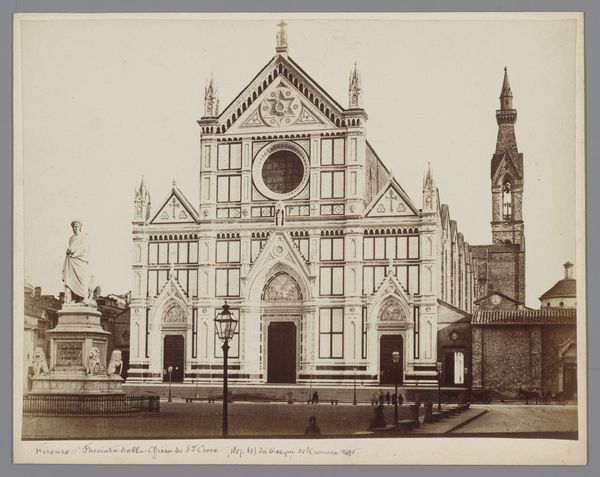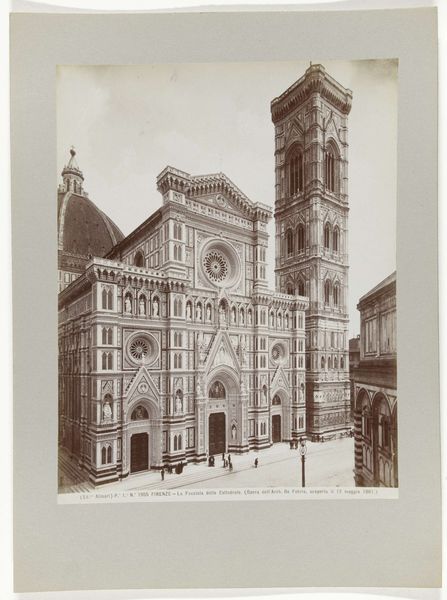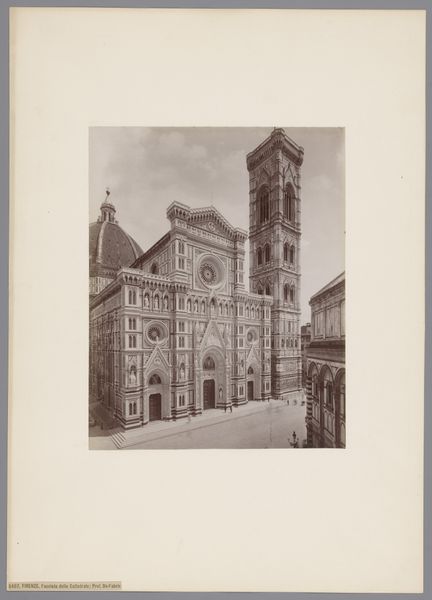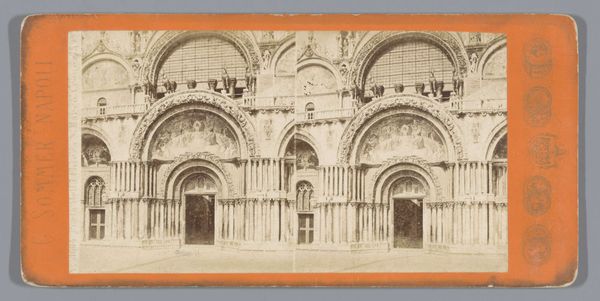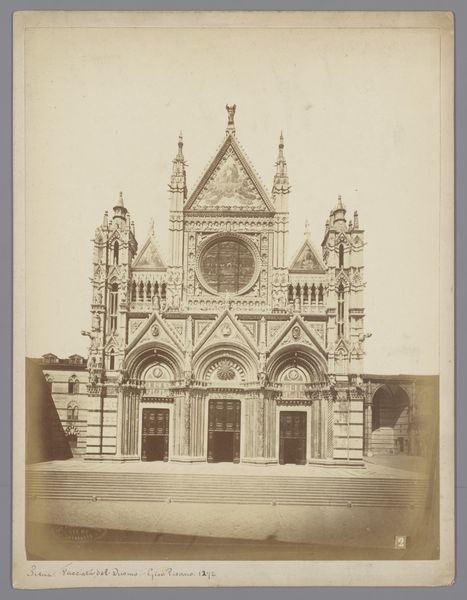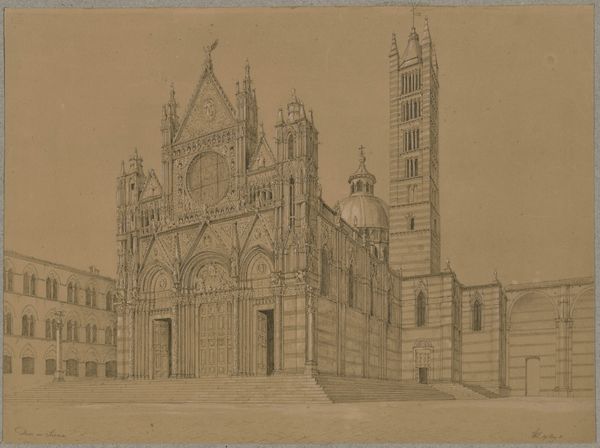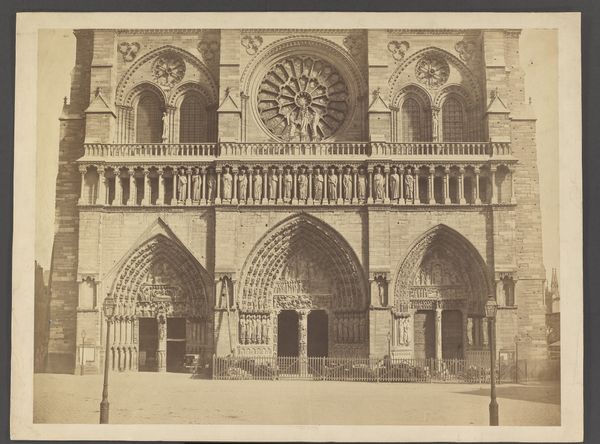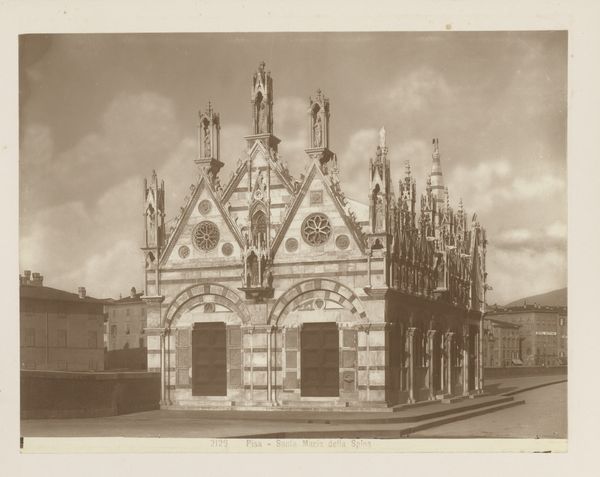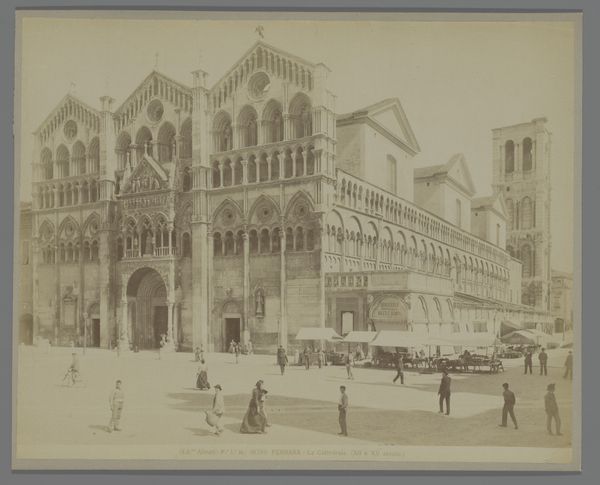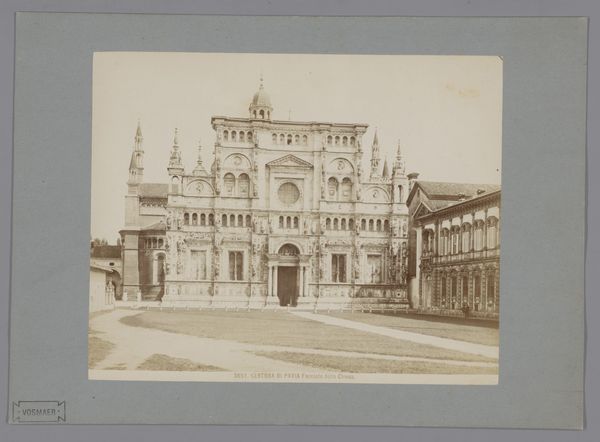
plein-air, photography, architecture
#
plein-air
#
landscape
#
monumental
#
architecture mock-up
#
historic architecture
#
photography
#
italian-renaissance
#
architecture
Dimensions: height 306 mm, width 404 mm
Copyright: Rijks Museum: Open Domain
This photograph captures the exterior of the Certosa di Pavia monastery church in Pavia, Italy. Although the artist remains anonymous, the image provides a window into the cultural and religious landscape of its time. Consider the historical and social contexts that shaped the creation of this photograph and the building itself. Commissioned by Gian Galeazzo Visconti, the Duke of Milan, the Certosa di Pavia was conceived in 1396, a period of intense political maneuvering and the consolidation of power in the Italian city-states. The monastery served not only as a place of worship but also as a symbol of the Visconti family's wealth, piety, and authority. What narratives are embedded within the Certosa's architecture and this photograph? Religious spaces historically reflect the societal structures of their time, often reinforcing hierarchical relationships and power dynamics.
Comments
No comments
Be the first to comment and join the conversation on the ultimate creative platform.
